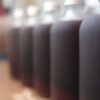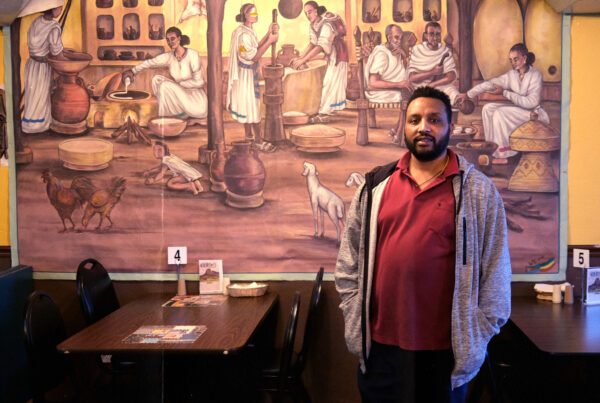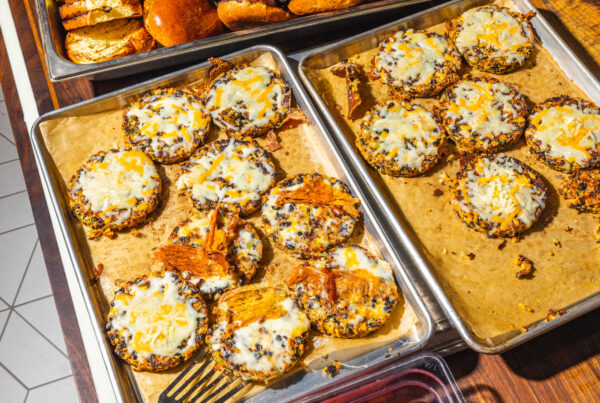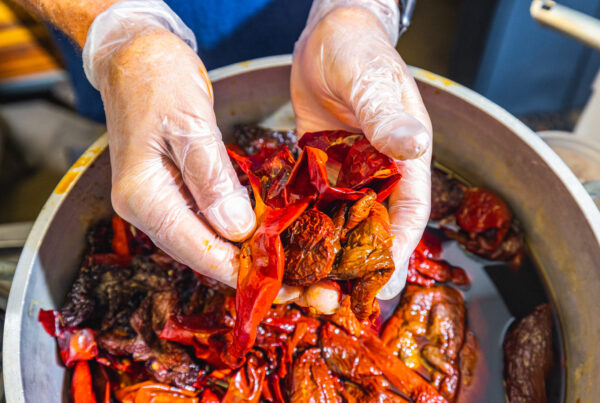Story by Courtnie Dawson

Observing a chef’s work with a wood-fired grill is like watching a lion tamer take control over their charge. Beneath a grate flickers a campfire, where pieces of wood soften and dissolve as the heat eats them away. The chef places a steak on the grate, then stokes the fire, coaxing it to reach for the meat. Undeterred by the licking flames, the chef shifts the position of the steak, using a combination of instinct and skill to encourage a perfect, smoky sear.
Wood-fired cooking conveys a sense of danger and romance. The final dish conjures a feeling of prehistory, of huddling around flames awaiting the moment when fresh-hunted meat becomes a nourishing meal. All cooking was originally fire cooking, and all forms of food preparation- our microwaves, ovens, grills – follow a common path back to a fire pit dug into the dirt.

As a culinary trend, wood-fired cooking has returned to the stage with a fierceness. It’s no longer a matter of surviving, but of pleasure. What originally began as the only way of converting rough ingredients into food, is now an eclectic culinary trend.
“Woodfired cooking is cooking with the elements of the world,” says CJ Cacioppo, the owner of Caci (pronounced KAW-Chee) Wood-fired Sicilian Grill. “It brings back from the specialized to the basics, to what’s important. It’s cooking at its purest.”
The openings of Caci in Eagle and Diablo & Sons Saloon in downtown Boise in late 2018 mark the emergence of the wood-fired food trend into the Treasure Valley. Patrons can find wood-fired pizza in nearly every corner of the valley (Caci included), but the search for finer entrees cooked over flames is like panning for gold among piles of river cobbles.
But why even bother? What is the difference between food coming off a flat-top grill and food still sizzling from time over coals?
For CJ, it’s an incomparable difference in flavor.
“Under natural wood-fired cooking, you’re going to get this flavor that stands out,” CJ says. “There’s nothing added to our fires. No accelerant, no processed gas, just wood. It brings out a more unique trademark of flavor. Everything tastes better when you’re camping right? Because it’s cooked over a fire.”
The simplicity of wood-fired food comes to CJ through his Sicilian roots, calling him to focus on high-quality ingredients with their own unique flavors and using fire to maximize their full potential. While the cooking style is not specific to Sicily, CJ feels it is the best method to accentuate the values of Sicilian food: fresh, simple, flavorful. Most of Caci’s ingredients are imported from Italy for authenticity and quality, if not made in-house under his ideal conditions.
Rather than depending on heavy seasonings and thick sauces to set the stage on a customer’s plate, CJ’s wood fire reacts with the main ingredients themselves.
“Everything we serve hits our woodfired grill at least once,” CJ says, and that includes the ingredients of the light sauces that accentuate the pure flavors of their fresh vegetables, succulent seafoods, and heartier meats. “We prioritize real, whole ingredients cooked the best we can. There’s no processed food cooked on a woodfire. It’s as pure as possible.”
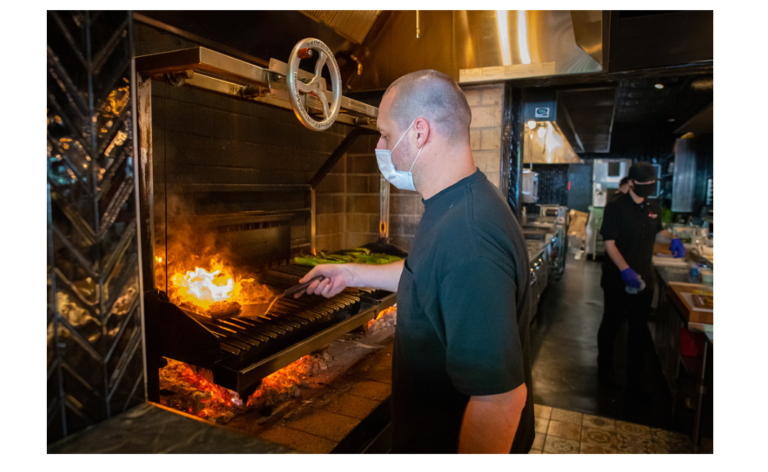
Meanwhile, at Diablo & Sons Saloon, Chef Robby DeBolt rests steaks and onions onto the grill; a flickering inferno flashing up between the grates. For Robby, the wood itself is the true source of the distinct tastes and textures of wood-fired cooking.
“Wood-fired vegetables really soak up that hardwood, smoky flavor,” Robby says. “It can’t be beat. Smoke accentuates the flavor of the meat and wraps itself around it, but with veggies it becomes really vocal.”
Dave Krick, the owner of Diablo & Sons Saloon, had been interested in the use of fire in cuisine for a while, and the opening of his latest restaurant provided the blank canvas in which to make that a reality for his own customers.
“Heat is heat, but what differentiates [wood-fired cooking] is temperature, intensity, and the ability to rapidly change the dynamic,” Dave says.
Dave is well-known for his passion for local ingredients and Diablo & Sons is no exception. The introduction of wood-fired grilling provided the opportunity for a new perspective on local ingredients: using them to power the operation itself. Diablo & Sons sources local wood from the Treasure Valley’s substantial orchards to fuel the flames, incorporating a truly unique local flavor into the food.
“The superpower of fire is the flavor of the wood itself,” says Dave. “Charcoal and gas are heat sources, but cooking with wood, you get the flavor of the wood itself, and the smoke. Bringing that component into our cooking has been fun.”
While Caci mainly entertains lighter fare such as scallops and octopus, the chefs at Diablo & Sons stay true to the saloon-style vibe of hearty dishes, such as ribs, steak, and halibut. Not only because of what customers expect from a saloon, but Robby and the other chefs find hardier ingredients to be well suited to cooking over flame, and readily absorb the flavor of the fire.
“It’s not a delicate cooking method,” Robby says. “Char, smoke . . . It’s a very bold way of cooking. You aren’t going to cook anything very gently. You can expect intense, big flavors.”
Flavor is one thing, but wood-fired cooking is not an easy undertaking. Rather than flipping a switch or turning a knob, wood-fired food requires the constant maintenance of an unpredictable heat source. Even with experienced chefs, wood-fired grilling is not an easy path to take.
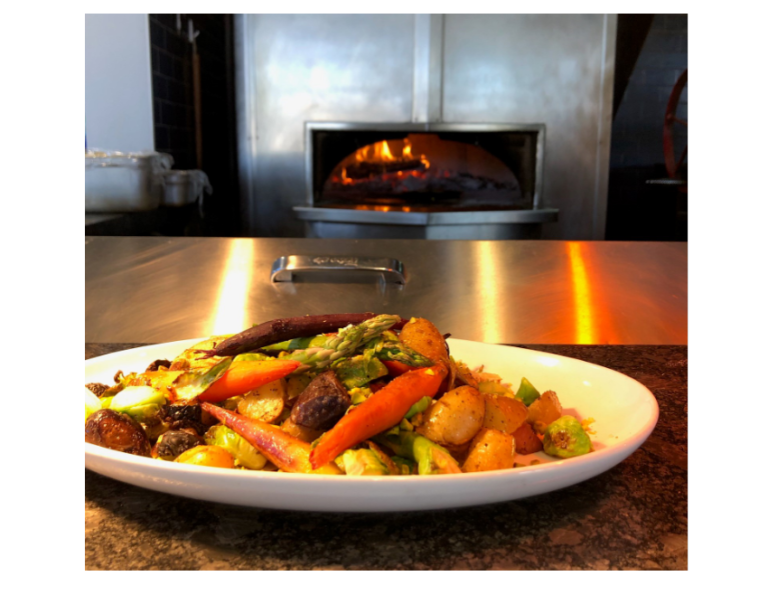
“It’s a challenge, hiring people that understand how fire works, how to keep the heat going, how to balance temperatures and cook times to ensure food turns out perfectly, how to adapt.” CJ says. CJ and Robby both agree on the difficulty of maintaining consistency of flavor and preparation with a fuel source that is, by nature, erratic.
“The live fuel source is a lot less tameable than a traditional gas grill. That adds another element of thoughtfulness to the execution of a dish,” Robby says, citing the unpredictability as both a disadvantage and an asset. “The lack of control is difficult, but having the ability to truly perfect a sear or a roast by slightly changing the temperature as it cooks is a benefit.”
There are less-than-romantic sides to wood-fired cooking, namely the weekly lugging of dozens of wood cords into kitchen storage, and the maintenance of hoods and vents from the impact of hours of live flame (not to mention the occasional unexpected call to the fire department). But despite the burns, the aching back muscles, and the clothes smelling of campfire, Robby wouldn’t give it up for anything else.
“Grilling has always been my favorite station. It’s the most fun,” Robby says. “And adding the element of fire and craftsmanship has been awesome. But part of it is just the kid in me. I mean, who doesn’t like playing with fire?”

